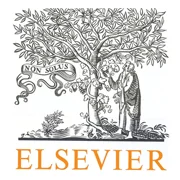دانلود ترجمه مقاله نقش دورنمای منابع انسانی در بهره وری خدماتی سازمان
| عنوان فارسی |
نقش دورنما، راهبرد، و منابع انسانی روی بهره وری خدماتی سازمان های غیرانتفاعی |
| عنوان انگلیسی |
Impact of Vision, Strategy, and Human Resource on Nonprofit Organization Service Performance |
| کلمات کلیدی : |
NPO؛ چشم انداز؛ استراتژی؛ منابع انسانی؛ عملکرد خدماتی |
| درسهای مرتبط | مدیریت منابع انسانی |
| تعداد صفحات مقاله انگلیسی : 8 | نشریه : ELSEVIER |
| سال انتشار : 2016 | تعداد رفرنس مقاله : 39 |
| فرمت مقاله انگلیسی : PDF | نوع مقاله : ISI |
|
پاورپوینت :
ندارد سفارش پاورپوینت این مقاله |
وضعیت ترجمه مقاله : انجام شده و با خرید بسته می توانید فایل ترجمه را دانلود کنید |
1. مقدمه 2. بررسی مقالات 3. روش تحقیق 4. نتایج و بحث و بررسی 5. نتیجه گیری

استراتژی مدیریت در NPOها: تمام سازمانها از تعهد خود به استراتژی بهره می گیرند که ارزش مورد هدف سازمان، ابزار مورد استفاده جهت دستیابی به این ارزش و نحوه پایداری این ارزش را توصیف می کند. توسعه یافته ترین و گسترده ترین مدلهای توسعه استراتژیهای سازمانی مربوط به بخش خصوصی است (چانگ و فلورز، 1980؛ میلر و دییز 1996؛ موور 2000؛ لیو و همکارانش 2014). براون و اینورسون (2004) مدعی شدند که درک مفهومی استراتژی مدیریت در NPOها برای انعکاس بهتر مشخصه منحصربفرد خود پیچیده تری می شود. استراتژیهای سازمانی، بقاء NPOها را تضمین کرده و ارتباط نزدیکی با عملکرد سازمانی دارند. استراتژیهای سازمانی کم برای NPOها پیشنهاد شده است. از میان این استراتژیها، مدل استراتژی جایگزین برای استفاده در سازمانهای دولتی توسعه یافته و بر سه مسئله کلیدی تاکید دارد: ارزش عمومی که باید خلق شود، منابع قانونی بودن و حمایت از سازمان و ظرفیت عملیاتی برای ارزش دهی. این مدل استراتژی با تجربه مدیران NPO تشدید می شود چون توجه را بر هدف اجتماعی و روشهای تحرک جامعه جهت شرکت در اهداف اجتماعی به جای اهداف مالی همچون فروش محصول و خدمات متمرکز می سازد (موور، 2003). کاماررو و گاریدو (2009) جهت تجزیه و تحلیل نقش سه جهت گیری استراتژیکی جایگزین جهت بهبود عملکرد اجتماعی(آموزش و نگهداری) و عملکرد اقتصادی (برحسب درآمد و تعداد بازدیدکنندگان) 182 موزه اسپانیایی بر سازمانهای هنری و موزه ها تاکید داشتند (یعنی مشتری، فروش و محرمانگی). آنها نشان دادند که عملکرد اجتماعی ارتباط بالایی با جهت گیری مشتری و محرمانگی دارد، درحالیکه عملکرد اقتصادی به جهت گیری فروش بستگی دارد. سازمانهای خدمات انسانی غیرانتفاعی نیازمند توسعه استراتژی می باشند که بر بُعد ارزش محور و منحصربفرد برنامه های خود تاکید دارد (پورتر، 1985؛ فرومکین و آلیس، 2000). منحصربفرد بودن خدمات انسانی NPO، دارایی محیط های رقابتی می باشد. بنابراین، تمایز و منحصربفرد بودن، مولفه های کلیدی استراتژی مدیریت NPO می باشند. پورتر (1985) مدل استراتژی رقابتی کلی را پیشنهاد داد که می توان به سه گروه اصلی تقسیم کرد: رهبری کلی هزینه، تمایز و تمرکز. مدل پیشنهاد می دهد که نیازی به پیروی از صنایع به هنگام ارائه خدمات نیست. این مدل توسط سازمانهای انتفاعی بمدت چندین سال استفاده شده است. این تحقیق به هنگام بررسی رابطه بین عملکرد سازمانی و استراتژی از مدل استراتژی مدیریت پیشنهادی پورتر - با توجه به رهبری هزینه کلی، تمایز و تمرکز بعنوان متغیرهای اصلی- جهت بررسی نحوه استفاده از منابع داخلی و خارجی توسط NPO استفاده کرد.
Management strategy in NPOs: All organizations benefit from committing themselves to a strategy that describes the value the organization intends to produce, the means it will use to produce that value, and how it will sustain itself. The most well-developed and widely used models for developing organizational strategies come from the private sector (Chang and Flores, 1980; Miller and Dess, 1996; Moore, 2000; Liu et al., 2014). Brown and Iverson (2004) claimed that the conceptual understanding of management strategy in NPOs is becoming more sophisticated to better reflect their unique character. Organizational strategies ensure the survival of NPOs and are closely related to their organization performance. Few organizational strategies have been proposed for NPOs. Of these, an alternative strategy model developed for use in government organizations focuses on three key issues: the public value to be created, the sources of legitimacy and support for the organization, and the operational capacity for delivering value. This alternative strategy model seems to resonate powerfully with the experience of NPO managers because it focuses attention on social purpose and on ways for society to be mobilized to contribute to social purposes rather than on financial objectives such as selling products and services (Moore, 2000). Camarero and Garrido (2009) focused on museums and arts organizations to analyze the role of three alternative strategic orientations (i.e., customer, sales, and custodial) in improving social performance (in education and conservation) and economic performance (in terms of income and number of visitors) for 182 Spanish museums. They revealed that social performance was highly related to custodial and customer orientation, whereas economic performance depends mainly on sales orientation. Nonprofit human service organizations need to develop a strategy that emphasizes the unique value - driven dimension of their programs (Porter, 1985; Frumkin, and Alice, 2000). The uniqueness of NPOs’ human services is an asset in an increasingly competitive environment. Thus, differentiation and uniqueness are key elements of an NPO management’s strategy. Porter (1985) proposed a general competition strategy model that can be divided into three main categories: overall cost leadership, differentiation, and focus. The model proposes that there is no need to follow the industry crowd in the provision of services. This model has been used by for-profit organizations for several years. In examining the relationship between strategy and organizational performance, this study applied Porter’s proposed management strategy model—considering overall cost leadership, differentiation, and focus as the main variables— to investigate how NPOs can capture and fully use their internal and external resources.
بخشی از ترجمه مقاله (صفحه 8 فایل ورد ترجمه)
محتوی بسته دانلودی:
PDF مقاله انگلیسی ورد (WORD) ترجمه مقاله به صورت کاملا مرتب (ترجمه شکل ها و جداول به صورت کاملا مرتب)


دیدگاهها
هیچ دیدگاهی برای این محصول نوشته نشده است.